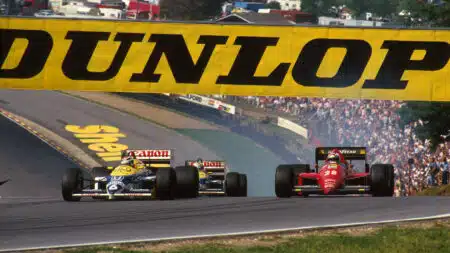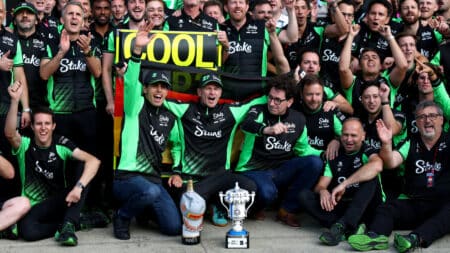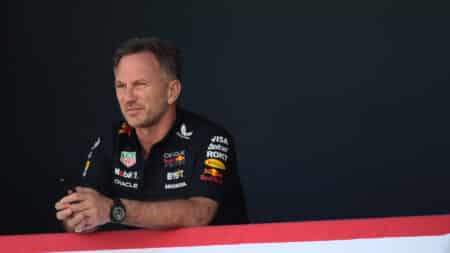
Brands Hatch: F1's beloved countryside amphitheatre
On this day in 1964, the roar of F1 engines echoed through the Kent countryside for the first time, as Brands Hatch made its debut on the world stage
Daniel Ricciardo’s disqualification from second place in Melbourne was still the talk of the paddock as the F1 teams re-converged in the equatorial heat of Kuala Lumpur. The whole argument is very delicately poised as the date for Red Bull’s appeal at the FIA court has been set for April 14.
On the one hand, the team was warned about an apparent over-supply of fuel – as measured by the FIA-specified flow sensors – on Ricciardo’s car as early as Friday practice in Melbourne, was warned again in the early stages of the race and on each occasion chose not to modify the flow. Furthermore, the degree of over-supply – believed to be in the region of 0.25% – would confer a significant lap time advantage under the new regulations.
On the other hand, Red Bull maintains that its own measurements from the injectors show that at no time was the car over the 100kg/hr flow limit and that the FIA-supplied sensors had been giving inconsistent readings up and down the pitlane all weekend and could not therefore be trusted to be accurate.
Red Bull’s defence is expected to be that the use of the FIA sensor as the arbiter of fuel flow is merely a technical directive and not a regulation, citing the FIA’s own example from the Mercedes ‘secret test’ at Barcelona last year that made clear the opinion of technical delegate Charlie Whiting has no regulatory value. The only relevant regulation, Red Bull insists, is that the flow does not exceed 100kg/hr – a regulation it argues it did not break.
It’s an argument that goes to the very core of the new formula. It has been framed as a fuel flow formula, yet the device for measuring that flow is being called into question. The accuracy level of the ultrasonic device according to the manufacturer’s own data sheet is as follows:
These tolerances – meeting targets set by the FIA – may be perfectly acceptable in most real life applications, but in the world of F1 a 0.25 per cent disadvantage or advantage is very significant. With the old naturally aspirated engines, a 0.25 per cent increase in maximum fuel flow would not have yielded any spectacular gain.
But with a turbocharged engine, that increase in flow allows you to run appropriately more turbo boost and it’s believed that the amount by which the FIA wished to see Ricciardo’s flow turned down by would have equated to between 0.2-0.3s per lap. Which would almost certainly have lost him a place to the McLaren of Kevin Magnussen – and maybe to that of Jenson Button too. It’s little wonder that Red Bull preferred its own data.
In which case, we are potentially looking at the prospect of the device at the very heart of the fuel flow principle being unfit for purpose. So, why is that regulation there in the first place? The intention when the regs were framed was that it would concentrate engine development on the same path as that being followed by the car industry – ie. torque rather than high-revs power.
The fuel flow limit essentially makes it not worthwhile revving the engine much beyond 12,000rpm even though the rev limit is 15,000rpm. The permitted peak fuel flow flattens out from 10,500rpm – and so it’s only worth going to the revs that will drop you back into the torque band.
What if that fuel flow limit were abolished but the requirement of using no more than 100kg in the race retained? Potentially it would allow you to run maps that could take full advantage of the 15,000rpm limit in qualifying, with appropriately mega boost. We would probably be looking at genuinely 1000bhp combined engine/ERS in qualifying.
Yet the engines would still need to last five races, on pain of penalty. So there’d be a certain strategic gamble in how much boost you dare run in qualifying. If the engine could withstand occasional qualifying boost yet still last five races, then that would be a fantastic engineering achievement. If it didn’t, then those teams would have to restrict their qualifying boost.
This is all just theory at the moment. But we have a very interesting test case coming up – and who knows how that might impact upon the future?
More from Mark Hughes
Success should come to Valtteri Bottas
2014 Australian Grand Prix report
Who’s got the new formula figured out?

On this day in 1964, the roar of F1 engines echoed through the Kent countryside for the first time, as Brands Hatch made its debut on the world stage

Nico Hülkenberg's long-awaited first podium at Silverstone came after a virtuoso drive, but it only came about thanks to one unforgettable qualifying lap in 2020, as Mark Hughes recalls

Nico Hülkenberg's first F1 podium followed a faultless British GP drive where he went against his team with strategy calls that proved crucial in wet weather at Silverstone. Here are the radio messages that show how he pulled it off

From shock Zoom calls to ruthless midnight firings, F1’s history is littered with team principals and executives who are in command one moment and unceremoniously sacked the next